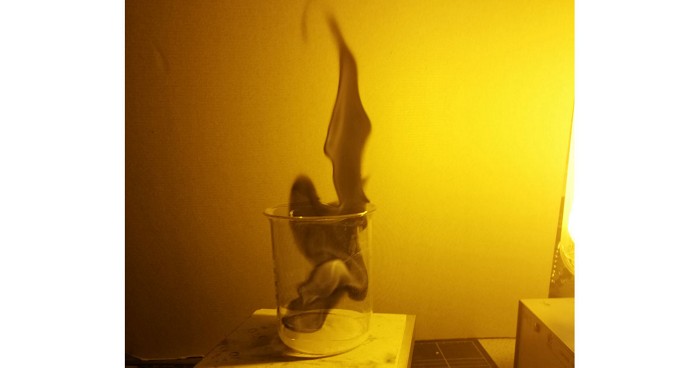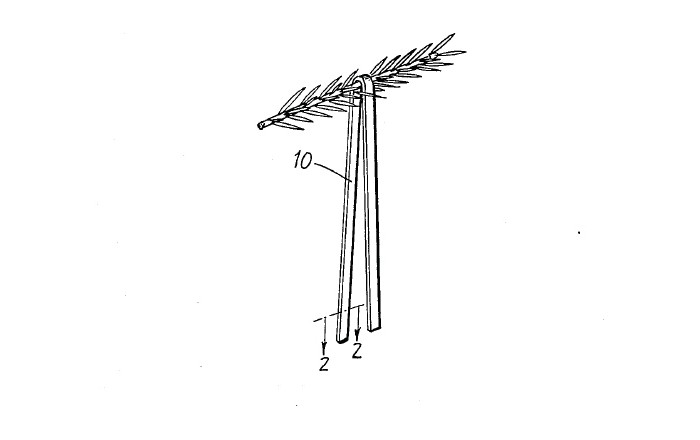Advertisement
Grab your lab coat. Let's get started
Welcome!
Welcome!
Create an account below to get 6 C&EN articles per month, receive newsletters and more - all free.
It seems this is your first time logging in online. Please enter the following information to continue.
As an ACS member you automatically get access to this site. All we need is few more details to create your reading experience.
Not you? Sign in with a different account.
Not you? Sign in with a different account.
ERROR 1
ERROR 1
ERROR 2
ERROR 2
ERROR 2
ERROR 2
ERROR 2
Password and Confirm password must match.
If you have an ACS member number, please enter it here so we can link this account to your membership. (optional)
ERROR 2
ACS values your privacy. By submitting your information, you are gaining access to C&EN and subscribing to our weekly newsletter. We use the information you provide to make your reading experience better, and we will never sell your data to third party members.
K-12 Education
Newscripts
How can chemist parents boost at-home science learning for kids?
by Craig Bettenhausen
December 6, 2020
| A version of this story appeared in
Volume 98, Issue 47
Taking kids’ at-home science lessons to the next level

As October wrapped up, many US schools announced plans to continue remote learning. That got the Newscripts gang thinking: Baking-soda-and-vinegar volcanoes are fine, but what can a chemistry-knowledgeable parent do to take the at-home chemistry lab up a notch?
With four kids under the age of 7 at home, this Newscriptster reached out to Scott Milam, who teaches chemistry and physics at Plymouth High School in Canton, Michigan. One experiment Milam suggests demonstrates the chemical reaction behind burning: oxidation. We placed a pad of fine-mesh steel wool on aluminum foil and measured its mass on a kitchen scale. In our case, the starting mass was 12 g. Then, donning safety goggles, we took it outside to a concrete slab and blasted it with a blowtorch (a crème brûlée torch would work, too). The kids, standing at a safe distance, loved watching the glow of the burning steel travel up the fibers, like little incandescent worms. And when we took the cooled wool back to the scale, they were surprised to see it had gained 3 g, which they eventually attributed to the iron capturing oxygen from the air.

Milam also suggests a demonstration that shows the effect of temperature on vapor pressure. The kids watched while this Newscriptster heated about 30 mL of water in an aluminum can on the stove. When the water inside was at a rolling boil, the can was inverted into a large bowl of ice water via tongs. All the kids jumped at the loud crunch as the can instantly imploded. Their wide-eyed silence was a perfect opportunity to talk about how the pressure of a gas drops as its temperature falls and how a full can of steam is only a few drops of liquid water. The sudden reduction in the number of gas particles as the water vapor condenses is the biggest factor creating the pressure differential that crushes the can.

We also entered the US Crystal Growing Competition. Jason Benedict, a University at Buffalo chemistry professor, hosts this annual contest. Each year, he sends hundreds of bottles of alum, also known as KAl(SO4)2·12H2O, to students across the country. The goal is to grow big, clear, single crystals. Participants are free to use any method, but Benedict has videos detailing his recommended technique, which is based on the slow evaporation of a saturated water solution. Our junior crystallographer, age 6, giddily showed off her strawberry-sized, 16 g crystal to her class via Zoom videoconference. We sent it to Buffalo for judging, but if last year’s 30 g winner is any guide, the competition will be stiff.
Experiments and demonstrations at home can make science lessons real for kids—a big deal when those lessons are stuck on a screen, Beatrice Tchapda tells Newscripts. Tchapda taught high school science in Cameroon and is currently teaching French immersion kindergarten at the Baltimore International Academy. She recommends that parents read their kids’ curriculum plans to look for topics they know how to demonstrate and enrich. She says parents can find accessible experiments to demonstrate food science, phase changes, weather, and life cycles for safe, at-home experimentation. Parents often have to fight the urge to do too much of the lab for their kids, she warns; it’s crucial to let the kids reach conclusions on their own.
Readers, if you have any ideas for safe, at-home experiments for kids, we’d love to hear about them.
Please send comments and suggestions to newscripts@acs.org.
Update
On Dec. 8, 2020, we updated the can crushing section of this story. Though a temperature-driven gas pressure change following the ideal gas law, PV = nRT, is part of what crushes the can, a reader pointed out that the condensation of steam to liquid water is a larger factor in the sudden drop in pressure inside the can. This can be illustrated by repeating the experiment without water in the can: it doesn’t work.





Join the conversation
Contact the reporter
Submit a Letter to the Editor for publication
Engage with us on Twitter